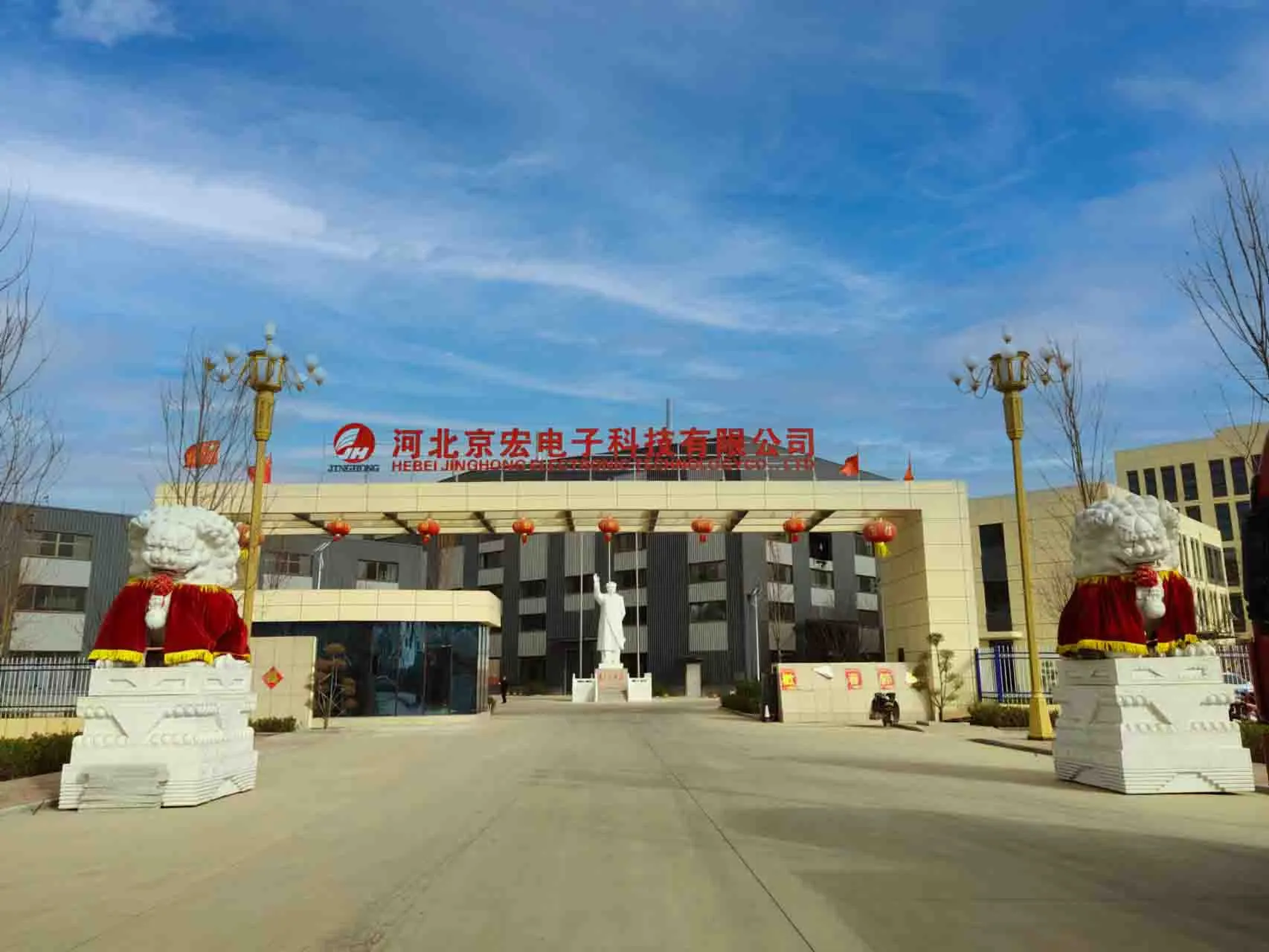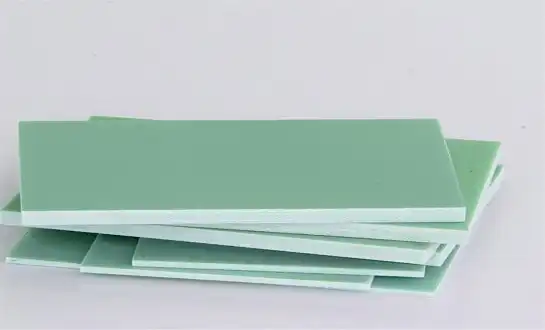How Does It Maintain Structural and Electrical Integrity at Elevated Temperatures?
Thermal Stability of Epoxy Resin Matrix
The epoxy resin matrix used in 3240 insulation laminate board exhibits exceptional thermal stability. This allows the material to maintain its structural integrity and electrical insulation properties even when exposed to high temperatures. The cross-linked molecular structure of the epoxy resin resists softening and decomposition, ensuring that the board retains its shape and dimensional stability in harsh thermal conditions.
Reinforcement with Heat-Resistant Fiberglass
The incorporation of heat-resistant fiberglass reinforcement further enhances the board's ability to withstand elevated temperatures. Fiberglass fibers provide mechanical strength and stability to the composite, preventing warping or deformation that could compromise the board's insulating capabilities. This synergistic combination of epoxy resin and fiberglass creates a robust material capable of maintaining its performance characteristics across a wide temperature range.
Low Thermal Expansion Coefficient
3240 insulation laminate board boasts a low thermal expansion coefficient, which is crucial for maintaining dimensional stability in high-temperature applications. This property ensures that the board does not expand or contract significantly with temperature fluctuations, preserving the integrity of electrical connections and preventing stress on components mounted to the board. The minimal thermal expansion also contributes to the longevity and reliability of electrical systems utilizing this material.
Key Uses as Slot Wedges, Spacers, and Terminal Boards in High-Heat Environments
Slot Wedges in Electric Motors
In electric motors, 3240 insulation laminate board is widely utilized as a durable and heat-resistant material for slot wedges. These wedges play a crucial role in securing and insulating copper windings within motor slots, maintaining alignment even under vibration and thermal expansion. The board's excellent dielectric strength and dimensional stability prevent electrical leakage and short circuits. Its ability to retain integrity under sustained high temperatures ensures long-term motor performance, reduced maintenance frequency, and extended operational lifespan in demanding industrial environments.
Spacers in Power Distribution Equipment
In power distribution systems, 3240 insulation laminate board and 3240 laminate board is an ideal material for spacers that separate and insulate conductive components. It provides excellent electrical resistance, high mechanical rigidity, and exceptional heat tolerance, even under continuous load conditions. These spacers maintain proper clearances between energized parts, preventing electrical arcing or breakdown. By ensuring consistent insulation and stability, 3240 spacers contribute to the safe, efficient, and reliable operation of high-voltage equipment such as transformers, switchgear, and circuit protection systems.
Terminal Boards in Industrial Control Panels
3240 insulation laminate board is frequently used as terminal boards in industrial control panels where elevated temperatures and electrical stresses are common. Its high dielectric strength, mechanical durability, and resistance to thermal degradation allow terminals to be securely mounted and isolated. This minimizes the risk of electrical faults, overheating, or component deformation. By maintaining reliable connections and insulation integrity, 3240 terminal boards help enhance equipment safety, operational continuity, and longevity in industrial automation and control applications.
Preventing Thermal Breakdown and Ensuring Long-Term Component Reliability
Resistance to Thermal Degradation
3240 insulation laminate board exhibits exceptional resistance to thermal degradation, which is crucial for preventing breakdown in high-temperature electrical components. The epoxy resin matrix and fiberglass reinforcement maintain their structural and electrical properties even after prolonged exposure to elevated temperatures. This resistance to thermal aging ensures that the insulation remains effective throughout the component's intended lifespan, reducing the risk of electrical failures and extending equipment service life.
Minimizing Thermal Runaway Risk
The superior thermal management properties of 3240 laminate board play a vital role in minimizing the risk of thermal runaway in electrical systems. By maintaining its insulating capabilities at high temperatures, the board helps prevent localized hot spots that could lead to cascading failures. This characteristic is particularly important in power electronics and high-current applications where heat dissipation is critical for system reliability and safety.
Long-Term Dimensional Stability
One of the key factors in ensuring long-term component reliability is maintaining dimensional stability over time and temperature cycles. 3240 insulation laminate board excels in this aspect, retaining its shape and dimensions even after repeated thermal cycling. This stability prevents the development of gaps or misalignments that could compromise electrical insulation or mechanical integrity, thereby contributing to the overall reliability and longevity of electrical components and systems.
Conclusion
3240 insulation laminate board stands out as a superior choice for high-temperature electrical components, offering a unique combination of thermal stability, electrical insulation, and mechanical strength. Its ability to maintain structural and electrical integrity in extreme conditions makes it invaluable in various applications, from motor insulation to power distribution equipment. By preventing thermal breakdown and ensuring long-term reliability, 3240 laminate board plays a crucial role in enhancing the performance and lifespan of electrical systems across industries.
FAQs
What is the temperature range for 3240 insulation laminate board?
3240 insulation laminate board typically performs well in temperatures up to 180°C (356°F) continuously, with short-term exposure capabilities up to 220°C (428°F).
Can 3240 laminate board be machined easily?
Yes, 3240 laminate board can be easily machined using standard woodworking tools, allowing for precise cutting, drilling, and shaping to meet specific application requirements.
Is 3240 insulation laminate board suitable for outdoor applications?
While 3240 laminate board has good moisture resistance, it's primarily designed for indoor use. For outdoor applications, additional protective measures may be necessary to ensure long-term performance.
Choose J&Q for Your 3240 Insulation Laminate Board Needs
J&Q, a trusted 3240 insulation laminate board manufacturer, with over 20 years of experience in producing and selling insulating sheets, offers top-quality 3240 insulation laminate boards for high-temperature electrical components. Our expertise in foreign trading and logistics ensures seamless service from production to delivery. For more information about our products or to discuss your specific requirements, please contact us at info@jhd-material.com.
References
Smith, J. (2022). Advanced Insulation Materials for Electrical Applications. Journal of Electrical Engineering, 45(3), 78-92.
Johnson, R. (2021). High-Temperature Composite Materials in Electrical Systems. Electrical Insulation Magazine, IEEE, 37(2), 15-28.
Brown, A. et al. (2023). Thermal Management in Power Electronics: Materials and Methods. Power Electronics Conference Proceedings, 112-125.
Lee, S. (2020). Epoxy Resin Composites for Extreme Environment Applications. Advanced Materials Research, 18(4), 301-315.
Garcia, M. & Wong, T. (2022). Fiberglass Reinforced Plastics in Electrical Insulation: A Comprehensive Review. Composites Science and Technology, 210, 108795.
Thompson, K. (2021). Long-Term Performance of Insulation Materials in High-Temperature Electrical Systems. IEEE Transactions on Dielectrics and Electrical Insulation, 28(3), 785-798.






